In recent years many software providers have helped to address this concern, helping with eye strain and sleep patterns. F.lux is perhaps the most noteworthy of the bunch, as their application single-handedly brought the topic to the table among techies who have slowly but surely started adopting it years ago.
Major operating systems have also begun building in an option for filtering out blue light, including Windows 10 (with the Fall Creators Update), macOS, Apple iOS, Android, and Amazon's Fire tablets.
Even though the initial impression of the yellow hue effect might shock you, your eyes will ease into the change. Once the colors settle in, you won't want to go back to the regular colors during the night as they difference in eye strain will be significant.
We'll provide brief walkthroughs for some of those operating systems, but F.lux has been around for about a decade now and is available on every major platform (download here). The software uses your location to match the sun cycle in your area, gradually adjusting your display color from 6500K (daylight) to warmer colors with less blue light as nighttime approaches.
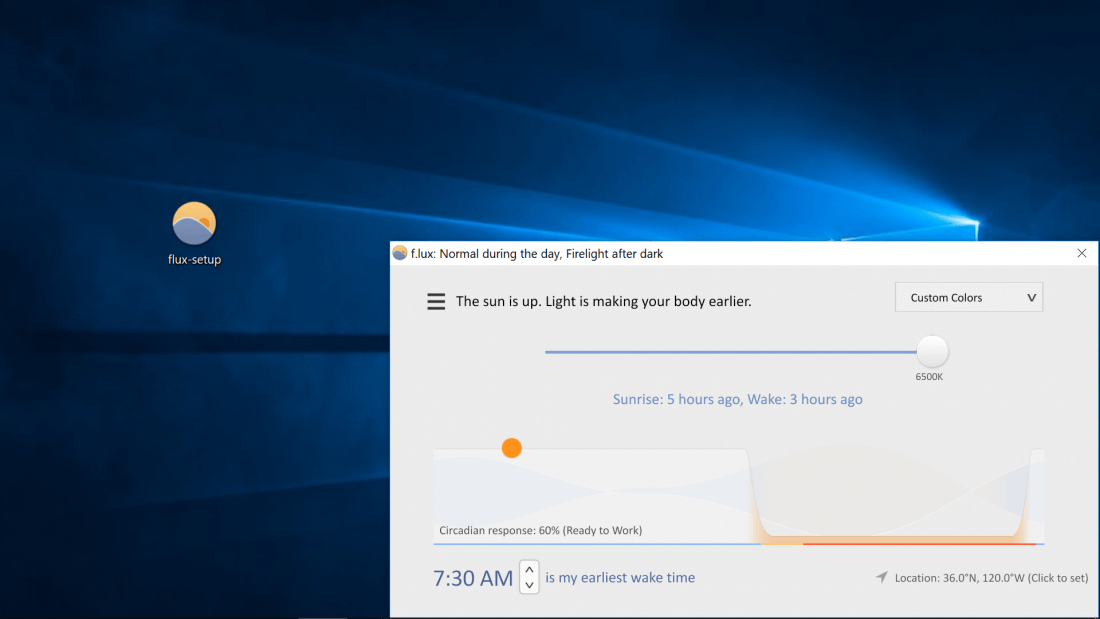
You can also manually change the temperature of your display between eight different colors, 6500K (daylight) being the brightest (blue/white) and 1200K (described as "ember") being the dimmest (orange/yellow).
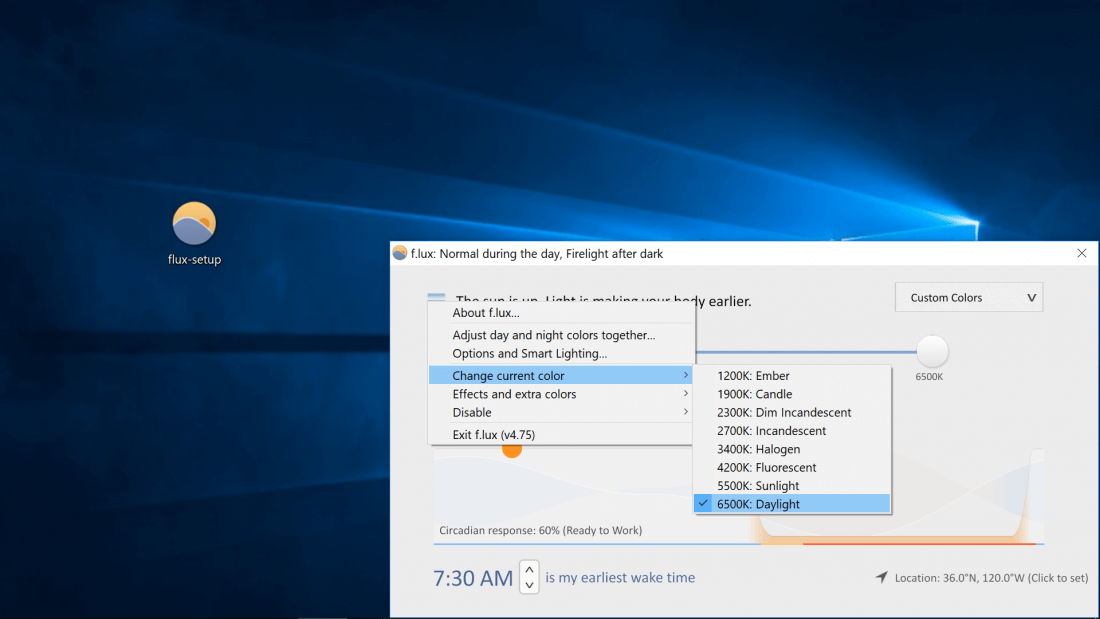
This can be reduced further by using the "Himalayan Salt Lamp" setting found under "Effects and extra colors." Other effects include "Darkroom mode" which makes your background black and text/interface red, "Emerald City" which applies a green tint, and "Soft White" which makes the daylight hue less fatiguing in our opinion, and it can be used in conjunction with the "Reduce Eyestrain" profile option.
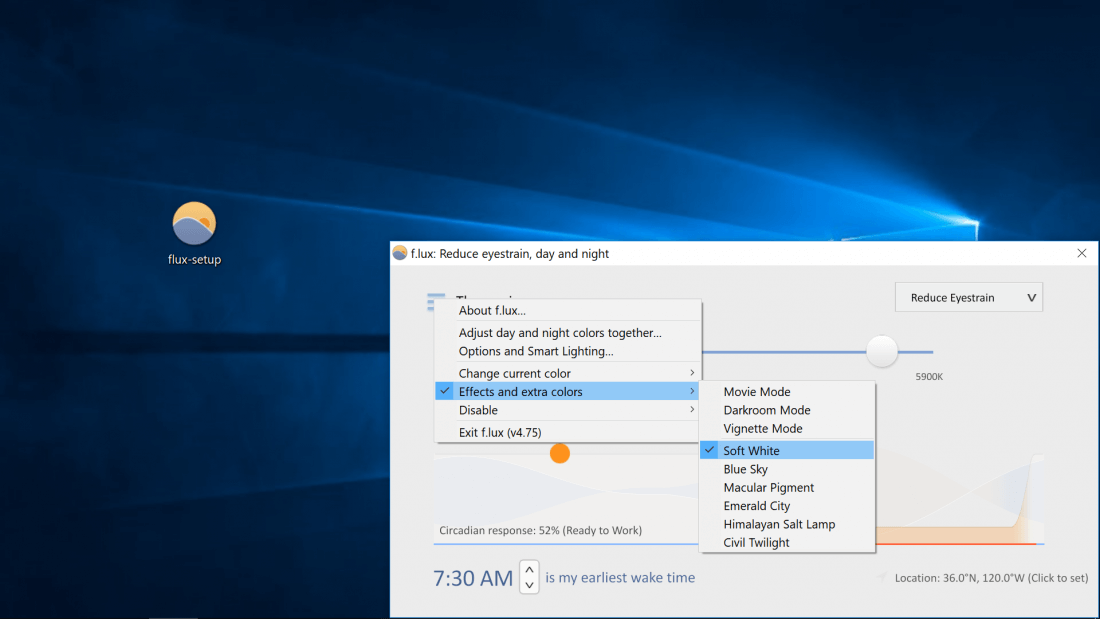
Of note, F.lux can be enabled/disabled with hotkeys and you can set it up so it disables itself automatically when you switch to and from specific applications (say, Photoshop or something where you need the color accuracy).
For those of you with connected lighting systems, the software lists support for Philips Hue, Philips ColorKinetics intelliWhite, YeeLight and LIFX.
Other alternatives to F.lux: SunsetScreen | Iris | Redshift
Folks with the Windows 10 Creators Update can enable the "Night light" feature found in Settings > System > Display, which will automatically apply a similar filter to your display as the sun sets and then remove it at the sun rises.
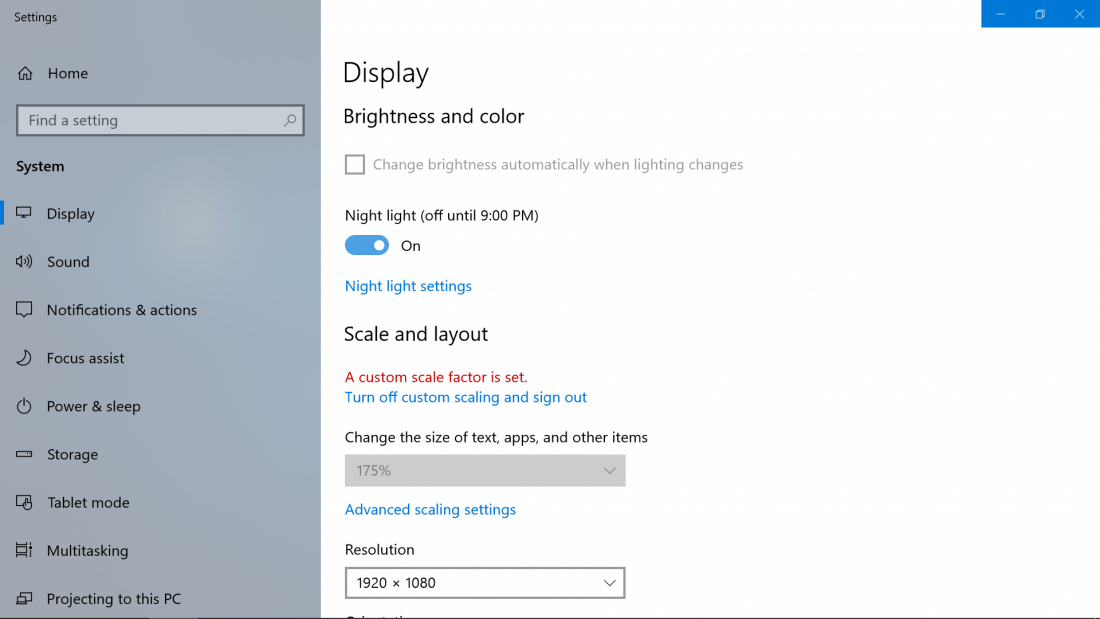
Along with the ability to set custom hours, you can tweak the temperature of the filter with a manual slider in "Night light settings" and the feature can be enabled/disabled without returning to the settings by using the button in the Action Center (beside the Windows clock).
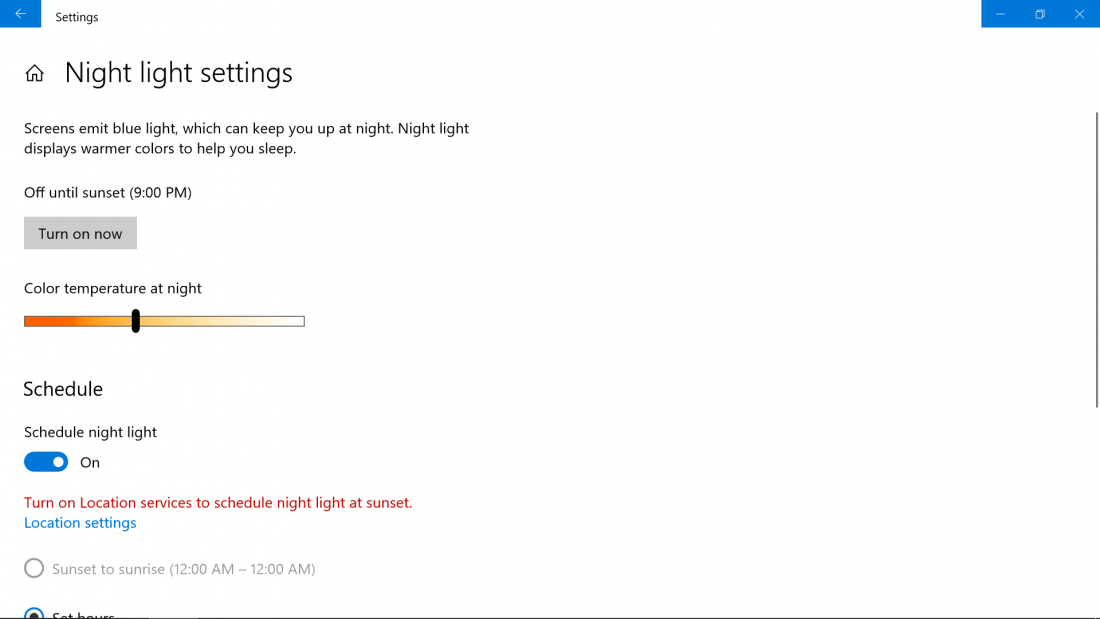
MacOS users from Sierra 10.12.4 onward have an option called "Night Shift" which can be found by navigating to SystemPreferences > Displays > Night Shift (tab)and provides about the same level of functionality as already described for Windows 10.
Night Shift is also available on select iOS devices (iPhone 5s onward, iPod Touch 6G, iPad Air and newer, iPad Mini 2 and newer, and iPad Pro), head to Settings > Display & Brightness > Night Shift.

Android N (or better) provide a "Night Light" feature. The actual name might vary depending on your phone's manufacturer but you should be able to make it out. Head to the Notifications menu >Gear icon > Display > Night Light.
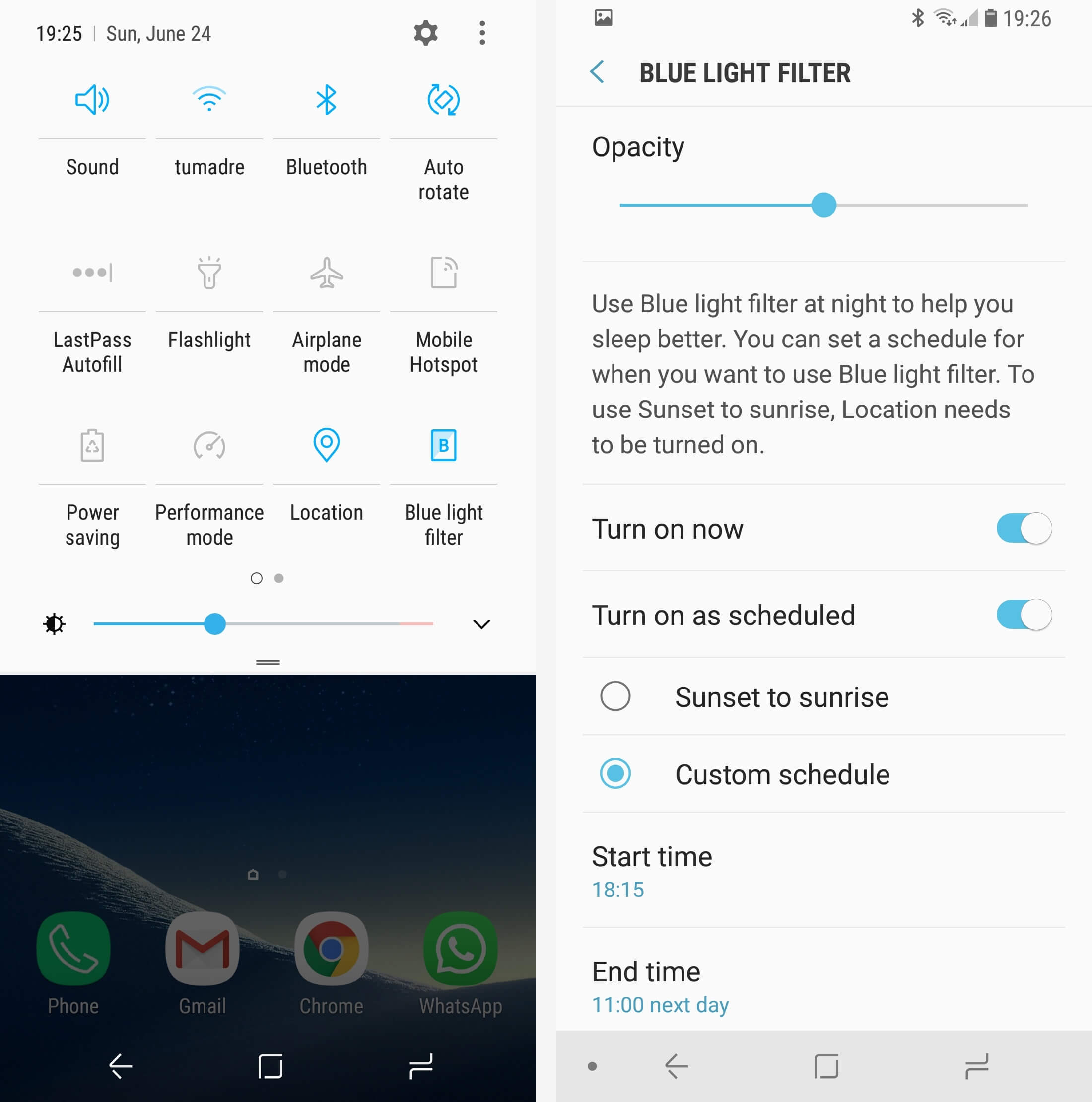
Amazon Fire tablet owners... head to Notifications menu > Settings > Display > Blue Shade.
Masthead photo: Jack Daniel Ocampo Palacios on Unsplash
 Mac Mini M2 Desktop deal: Save $100 at Best Buy
Mac Mini M2 Desktop deal: Save $100 at Best Buy
 Election night is coming to the big screen, and blue is crushing red
Election night is coming to the big screen, and blue is crushing red
 A 'Pen Pineapple Apple Pen' cafe has opened in Tokyo
A 'Pen Pineapple Apple Pen' cafe has opened in Tokyo
 These football fans' epic Twitter thread takes the piss out of rival team
These football fans' epic Twitter thread takes the piss out of rival team
 TikTok ban looms in U.S. Here's the latest.
TikTok ban looms in U.S. Here's the latest.
 Magician Collins Key searches for mystery girl in new digital series
Magician Collins Key searches for mystery girl in new digital series
 The New York Times just released the best thing of the election
The New York Times just released the best thing of the election
 Anne Hathaway sings 'Happy Birthday' to an adorably emotional fan
Anne Hathaway sings 'Happy Birthday' to an adorably emotional fan
 Man proposes to girlfriend in front of huge freshwater crocodile
Man proposes to girlfriend in front of huge freshwater crocodile
 Amazon Spring Sale 2025: Best Apple AirPods 4 with ANC deal
Amazon Spring Sale 2025: Best Apple AirPods 4 with ANC deal
 Patton Oswalt spins tragedy into a remarkable hour of standup comedy
Patton Oswalt spins tragedy into a remarkable hour of standup comedy
 Bob the Cat is chill AF during his audience with the Duchess of Cambridge
Bob the Cat is chill AF during his audience with the Duchess of Cambridge
 TV has the most LGBTQ characters in its history
TV has the most LGBTQ characters in its history
 NYT Strands hints, answers for April 23
NYT Strands hints, answers for April 23
 Welcome to 2016: Here's that Ariana Grande and Stevie Wonder duet
Welcome to 2016: Here's that Ariana Grande and Stevie Wonder duet
 The New York Times just released the best thing of the election
The New York Times just released the best thing of the election
 Ben Affleck thinks Prince George gave his son a cold, so sadly our nations must return to war
Ben Affleck thinks Prince George gave his son a cold, so sadly our nations must return to war
 NYT Strands hints, answers for May 1
NYT Strands hints, answers for May 1
 America, you may be sleepwalking into a Trump presidency. Still.
America, you may be sleepwalking into a Trump presidency. Still.
Mark Hamill reviews the worst Luke Skywalker action figures'Call Me By Your Name' merged with Monet paintings is Instagram geniusMark Hamill reviews the worst Luke Skywalker action figuresStar Wars Battlefront 2 progressionJennifer Lopez tells her #MeToo story in support of the movementYour guide to filling out your last'Call Me By Your Name' merged with Monet paintings is Instagram geniusLittle Caesars joins increasingly automated McDonalds with new robotFans get more insight on Luke in crucial 'Last Jedi' deleted sceneWolf Blitzer stars in CNN's virtual reality news app for Oculus RiftPeople aren't thrilled with Gal Gadot's tribute to Stephen HawkingNASA's planetIt's 2018, and dongle hell has only gotten worseGoogle Maps is now officially a gaming platformYour guide to filling out your lastBefore you see 'Love, Simon,' read the book it's based onStar Wars Battlefront 2 progressionThis may be the last year for candy hearts. HELPScientists expose coral reefs to acidic water and see impaired growthSean Bean finally reveals what Ned Stark's final words were Mars may have harbored a shocking amount of water, scientists find Sharing Love by Ross Gay Passing Mary Oliver at Dawn by Summer Brennan Poetry Rx: Valentine’s Day Edition by Kaveh Akbar The Postmenopausal Fairy Tale by Sabrina Orah Mark One Missing Piece by Jill Talbot Donald Hall, 1928–2018 Stories That Reclaim the Future by Victor LaValle To All the Introductions I’ve Loved Before by Michael Chabon The Desire to Unlearn by Chigozie Obioma Nature Redescribed: The Work of Vija Celmins by The Paris Review Redux: Spellbinders by The Paris Review Paris, Reviewed Meeting Eve Babitz by Lili Anolik Ricky Jay, the Magician with an Edge by Michael Chabon Three Writing Rules to Disregard by Benjamin Dreyer Pandora in Blue Jeans by Briallen Hopper On The Radio, It’s Always Midnight The Teddy Bear Effect Feminize Your Canon: Isabelle Eberhardt by Emma Garman